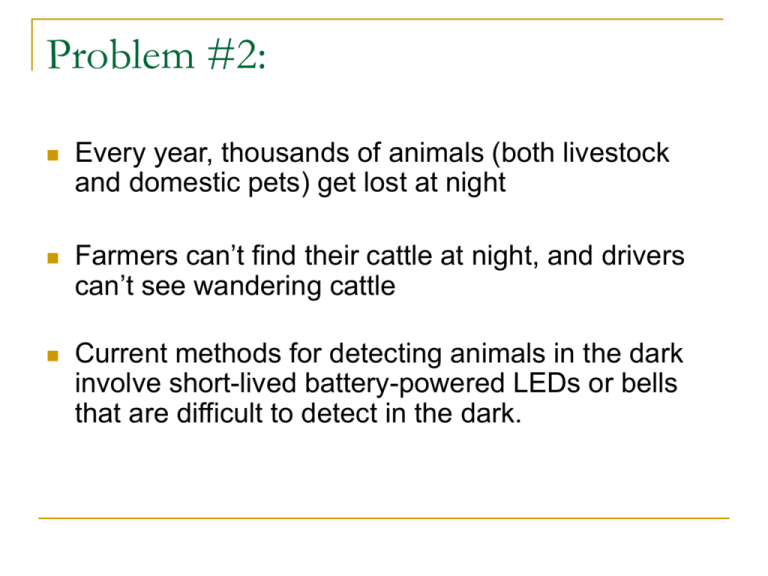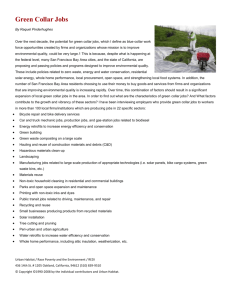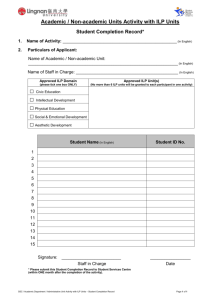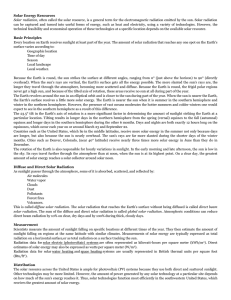presentation slides
advertisement

Problem #2: Every year, thousands of animals (both livestock and domestic pets) get lost at night Farmers can’t find their cattle at night, and drivers can’t see wandering cattle Current methods for detecting animals in the dark involve short-lived battery-powered LEDs or bells that are difficult to detect in the dark. Idea 2: LED Collar circuitry solar panels LED Features LEDs illuminate animal collar at night – ½ mile visibility Custom, solar-powered rechargeable battery storage Process: Photoresistor triggers battery to illuminate the LED at night Circuit Design Observations & Calculations Energy needed to power LED for 12 hours (1 night): Energy per in2 of solar cell stored in 12 hours: 70 mW per LED x 4 LEDs = 280 mW 0.25 second-long pulse every 2 seconds 0.280 W * 43200 seconds/8 = 1512 J (pulsing) Sun power in ideal conditions = 625 mW/in2 Avg. efficiency of solar cell = 15% Avg. efficiency of battery charging/discharging = 75% Avg. efficiency due to climate and geometry = 10% Avg. power per in2 of solar cell (with efficiencies) = 7 mW 0.007 W * 43200 seconds = 302.4 J Surface area needed to provide sufficient power: 1512 J/ 302.4 J = 5.0 in2 of solar paneling Concerns Changes in daylight hours Calculations are based on 12 hour nights 10 in2 of solar paneling needed in winter w/16 hour nights (would increase cost by ~$3.50) Varying efficiencies Cost Overhead and manufacturing costs will drive up prices – are consumers willing to pay that much? Projected Cost of Materials 4 LEDs 2 AA batteries 1 diode 1 photo resistor 1 resistor solar panels belt/collar TOTAL = $1.00 $2.00 $0.10 $0.25 $0.10 $3.50 $1.00 $7.95 Market Customer Base: Precedent: 100 million cows in the US 95 million other livestock 130 million domestic pets LED dog collar = ~$17.50 Market Gross Profit: Year 1: 325 million * 2% * $17.50 = $115 kk Year 2: 325 million * additional 5% * $17.50 = $285 kk Year 3: 325 million * additional 10% * $17.50 = $570 kk TOTAL in first 3 years = ~$1 billion








